Indochinese Tiger
- February 8, 2024
- 0 comment
The Indochinese tiger, scientifically known as Panthera tigris corbetti, is a subspecies of tiger indigenous to the Southeast Asian region. This magnificent creature is renowned for its stunning appearance, featuring a distinct coat pattern of orange fur adorned with dark stripes, perfectly adapted to its diverse habitats. Found primarily in countries such as Thailand, Myanmar, Laos, Vietnam, Cambodia, and parts of southwestern China, the Indochinese tiger inhabits a range of ecosystems, including dense forests, grasslands, and mangrove swamps.
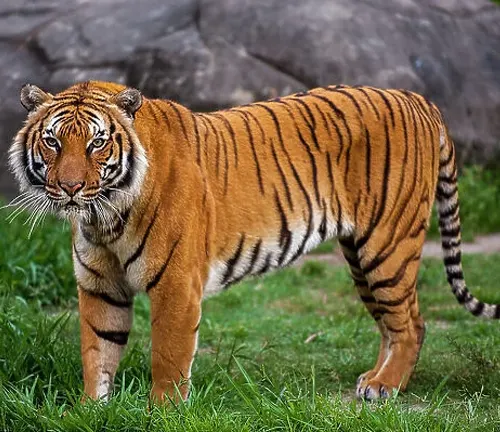
Despite its remarkable adaptability, the Indochinese tiger faces severe threats to its survival, including habitat loss due to deforestation, fragmentation, and illegal poaching driven by the demand for tiger parts in traditional medicine and wildlife trade. Conservation efforts are essential for safeguarding this critically endangered subspecies, encompassing initiatives such as habitat protection, anti-poaching measures, community engagement, and captive breeding programs. Preserving the Indochinese tiger not only ensures the survival of this majestic apex predator but also contributes to the conservation of biodiversity and the integrity of its natural ecosystems.
Efforts to protect the Indochinese tiger serve as a beacon of hope for its future, symbolizing the ongoing commitment to wildlife conservation and the preservation of our planet’s rich biological heritage.
| Aspect | Description |
|---|---|
| Scientific Name | Panthera tigris corbetti |
| Subspecies | Indochinese tiger |
| Habitat | Forests, grasslands, mangrove swamps |
| Range | Thailand, Myanmar, Laos, Vietnam, Cambodia, southwestern China |
| Size (Male) | 150 to 195 kilograms (330 to 430 pounds) |
| Size (Female) | 100 to 130 kilograms (220 to 290 pounds) |
| Coat Pattern | Orange fur with dark stripes |
| Threats | Habitat loss, fragmentation, illegal poaching |
| Conservation Efforts | Habitat protection, anti-poaching measures, community engagement, captive breeding programs |
| Status | Critically endangered |
Plight and Promise of the Indochinese Tiger

In the lush forests and diverse landscapes of Southeast Asia, roams a majestic predator that epitomizes the beauty and ferocity of the wild – the Indochinese tiger (Panthera tigris corbetti). Despite its awe-inspiring presence, this iconic subspecies faces grave threats to its survival. This article delves into the plight of the Indochinese tiger, examining its habitat, challenges, conservation efforts, and the hope for its future.
Indochinese’s Tiger Habitat
Habitat
The habitat of the Indochinese tiger consists of diverse environments found across Southeast Asia. This subspecies of tiger is primarily associated with dense forests, including both tropical and subtropical rainforests, which provide ample cover for stalking prey and establishing territories. Additionally, Indochinese tigers inhabit grasslands, savannas, and brushlands, particularly in areas where these habitats intersect with forested areas. They may also be found in mangrove swamps and riparian zones, especially in coastal regions where water sources are abundant.


Range
The range of the Indochinese tiger encompasses various countries in Southeast Asia. This subspecies is primarily found in regions including Thailand, Myanmar, Laos, Vietnam, Cambodia, and parts of southwestern China. Within these countries, the Indochinese tiger inhabits a range of diverse habitats, including dense forests, grasslands, and mangrove swamps.
Indochinese’s Tiger Physical Characteristics
The Indochinese tiger (Panthera tigris corbetti) possesses a set of physical characteristics that distinguish it from other tiger subspecies. Here are some key features:

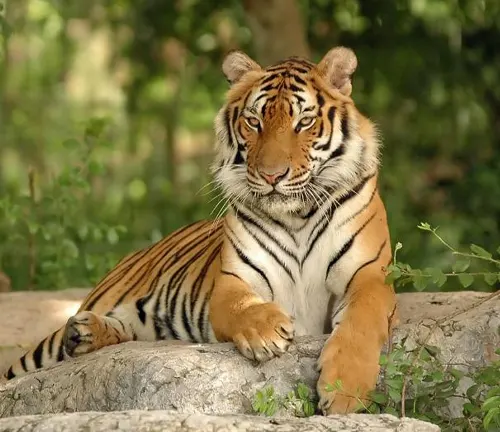
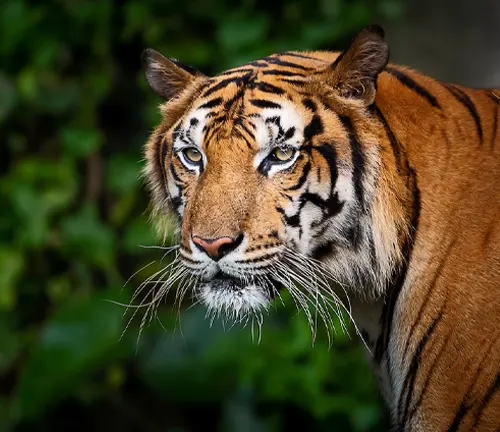
- Size: Indochinese tigers are generally smaller in size compared to other tiger subspecies. Adult males typically weigh between 150 to 195 kilograms (330 to 430 pounds), while females usually weigh between 100 to 130 kilograms (220 to 290 pounds).
- Coat: Their coat is adorned with vibrant orange fur and dark stripes, which serve as camouflage in their forested habitats. The stripes vary in width and spacing, and they extend across the tiger’s body, including its face, limbs, and tail.
- Body Structure: Indochinese tigers have powerful bodies with muscular limbs, enabling them to sprint and leap with remarkable agility and strength. They have broad heads and strong jaws equipped with sharp teeth and retractable claws, essential for hunting and subduing prey.
- Facial Features: Their faces often feature distinctive markings, including white patches around the eyes and cheeks, which contrast with the orange fur. These markings, along with their keen amber-colored eyes and prominent whiskers, contribute to their striking appearance.
- Adaptations: Indochinese tigers have evolved to thrive in their diverse habitats, with adaptations such as keen senses of sight, smell, and hearing. Their finely tuned senses help them locate prey and avoid potential threats in their environment.
Hunting and Diet
The Indochinese tiger is an apex predator with a formidable hunting prowess and a varied diet. Here’s an overview of its hunting behavior and dietary preferences:
Hunting Technique
Indochinese tigers are stealthy and opportunistic hunters. They rely on their keen senses of sight, smell, and hearing to locate prey, often stalking their targets with stealth and patience. Once within striking distance, they use their powerful muscles and sharp claws to ambush and overpower their prey swiftly.

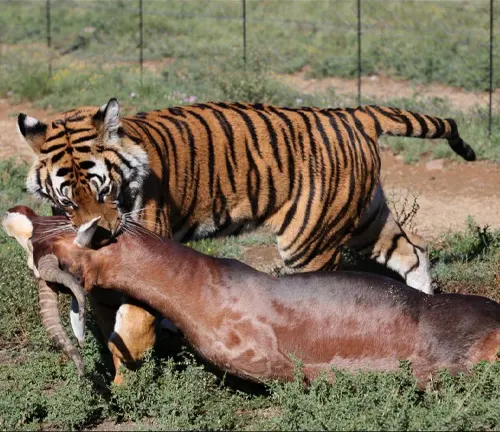
Prey Species
The diet of Indochinese tigers primarily consists of ungulates, such as deer, wild boar, banteng, and sambar. However, they are known to opportunistically prey on smaller animals like monkeys, birds, and reptiles when larger prey is scarce.
Hunting Strategy
Indochinese tigers typically target solitary or small groups of prey, utilizing cover and terrain to approach undetected. They may employ various hunting strategies, including ambushes from concealed positions or pursuit over short distances. Their agility and strength allow them to bring down prey much larger than themselves.
Consumption
After making a kill, Indochinese tigers consume large portions of the prey carcass, including muscle tissue, organs, and bones. They may also cache their kills in secluded locations to return to later for additional feeding.

Frequency of Hunting
Indochinese tigers require substantial amounts of food to sustain their energy needs. As solitary hunters, they may hunt several times a week, depending on the availability of prey and the success of their hunts.
Role in Ecosystem
As apex predators, Indochinese tigers play a crucial role in regulating prey populations and maintaining ecosystem balance. Their presence helps control herbivore populations, preventing overgrazing and preserving the health of plant communities.
Reproduction and Family Life
The reproduction and family life of the Indochinese tiger are essential aspects of its lifecycle, contributing to the survival of the species. Here’s an overview of their reproductive behavior and family dynamics.

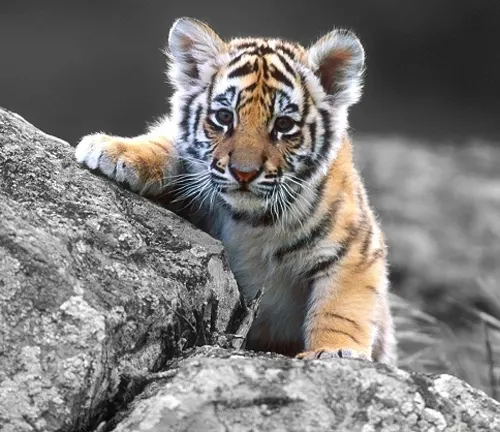

- Breeding: Breeding among Indochinese tigers typically occurs throughout the year, although peak breeding seasons may vary depending on factors such as prey availability and environmental conditions. During mating season, males and females engage in courtship behaviors, including vocalizations, scent marking, and physical interactions.
- Gestation and Birth: After successful mating, female Indochinese tigers undergo a gestation period of approximately three and a half months. They then give birth to litters of one to six cubs, with the average litter size being around two to three cubs. Cubs are born blind and helpless, relying entirely on their mother for care and nourishment.
- Maternal Care: Mother tigers provide dedicated care and protection to their cubs, nurturing them within secluded dens hidden from potential threats. They nurse their offspring and teach them essential survival skills, including hunting techniques and territorial behavior. Cubs remain dependent on their mother for up to two years before gradually becoming independent.
- Family Bonding: The bond between mother and cubs is strong, with the mother investing considerable time and energy in raising her offspring. Cubs develop social bonds with their siblings through play and interactions, which help strengthen family ties and prepare them for life in the wild.
- Dispersal: As cubs mature, they undergo a period of dispersal, during which they leave their mother’s territory to establish their own territories and find mates. This dispersal process is essential for maintaining genetic diversity within the population and preventing inbreeding.
- Reproductive Maturity: Indochinese tigers reach reproductive maturity at around three to four years of age, although this may vary among individuals. Once mature, they participate in the breeding cycle, contributing to the continuation of the species.
Conservation Status


Despite its formidable nature, the Indochinese tiger faces formidable threats to its survival. Habitat loss, driven by deforestation and human encroachment, poses a significant challenge, fragmenting their range and diminishing prey populations. Illegal poaching for their coveted pelts and body parts further compounds the tiger’s plight, driving it to the brink of extinction. As a result, the Indochinese tiger is classified as critically endangered by the International Union for Conservation of Nature (IUCN), highlighting the urgent need for concerted conservation efforts to safeguard its future.
Different Species
The term “Indochinese tiger” typically refers to the specific subspecies Panthera tigris corbetti, which is native to Southeast Asia, including countries such as Thailand, Myanmar, Laos, Vietnam, Cambodia, and parts of southwestern China.

Frequently Asked Questions (FAQs)
- What is the Indochinese tiger?
The Indochinese tiger (Panthera tigris corbetti) is a subspecies of tiger native to Southeast Asia, known for its distinctive coat pattern and smaller size compared to other tiger subspecies. - Where is the Indochinese tiger found?
The Indochinese tiger is found primarily in countries such as Thailand, Myanmar, Laos, Vietnam, Cambodia, and parts of southwestern China. - How many Indochinese tigers are left in the wild?
It is difficult to provide an exact number, but the population of Indochinese tigers in the wild is estimated to be fewer than 300 individuals. - What are the main threats to the Indochinese tiger’s survival?
The main threats to the Indochinese tiger’s survival include habitat loss due to deforestation and human encroachment, illegal poaching for their body parts, and human-tiger conflict. - What is being done to conserve the Indochinese tiger?
Conservation efforts include habitat protection, anti-poaching measures, community engagement, captive breeding programs, and public awareness campaigns. - How does the Indochinese tiger differ from other tiger subspecies?
The Indochinese tiger differs from other tiger subspecies in terms of its coat pattern, size, and habitat preferences. - What is the size and weight range of the Indochinese tiger?
Males typically weigh between 150 to 195 kilograms (330 to 430 pounds), while females range from 100 to 130 kilograms (220 to 290 pounds). - What does the Indochinese tiger eat?
The Indochinese tiger primarily preys on ungulates such as deer, wild boar, and banteng, but it may also hunt smaller animals and occasionally scavenge. - How do Indochinese tigers reproduce and raise their young?
Breeding occurs throughout the year, with females giving birth to litters of one to six cubs after a gestation period of approximately three and a half months. Cubs are raised by their mother and learn essential survival skills before becoming independent. - Are Indochinese tigers aggressive towards humans?
Indochinese tigers generally avoid humans but may exhibit aggression if threatened or cornered. - What is the current conservation status of the Indochinese tiger?
The Indochinese tiger is classified as critically endangered by the International Union for Conservation of Nature (IUCN) due to habitat loss, poaching, and other threats. - What are the key differences between male and female Indochinese tigers?
Male Indochinese tigers are typically larger and heavier than females, and they may have more prominent features such as larger mane and thicker necks. - How do Indochinese tigers communicate with each other?
Indochinese tigers communicate through vocalizations, scent marking, and body language, which are used for territory marking, mating, and social interactions. - Can Indochinese tigers swim?
Yes, Indochinese tigers are capable swimmers and may swim across rivers or bodies of water to access new territories or prey. - How far do Indochinese tigers roam in their territories?
The size of an Indochinese tiger’s territory can vary depending on factors such as prey availability and habitat quality, but it can range from several to hundreds of square kilometers.





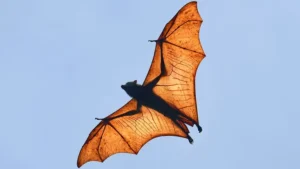
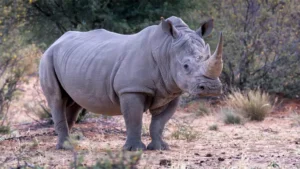



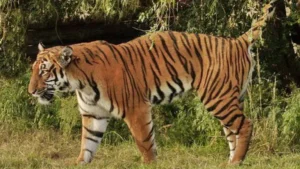

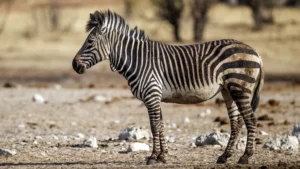

Leave your comment